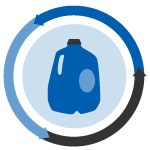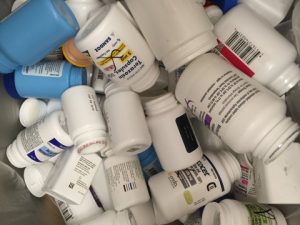 Demand for recovered commodities sent to China may further diminish as another round of import inspections threatens to slow or shutter Chinese processors.
Demand for recovered commodities sent to China may further diminish as another round of import inspections threatens to slow or shutter Chinese processors.

 Demand for recovered commodities sent to China may further diminish as another round of import inspections threatens to slow or shutter Chinese processors.
Demand for recovered commodities sent to China may further diminish as another round of import inspections threatens to slow or shutter Chinese processors.
 One manufacturer that uses recycled plastics will acquire another, and Pennsylvania may be moving to prohibit plastic bag bans.
One manufacturer that uses recycled plastics will acquire another, and Pennsylvania may be moving to prohibit plastic bag bans.
An appeals court in New York has rejected an attempt by the New York City Department of Sanitation to restore a ban on expanded polystyrene food-service products. Continue Reading
 Meal kits delivered straight to your doorstep are marketed as providing fresh, healthful food in a convenient way. But they also contain a lot of non-recyclable packaging, much of which carries problematic labeling.
Meal kits delivered straight to your doorstep are marketed as providing fresh, healthful food in a convenient way. But they also contain a lot of non-recyclable packaging, much of which carries problematic labeling.
 With global discussions around climate change evolving, Steve Alexander has seen a narrative emerge that reducing greenhouse gas emissions in packaging development is the key to sustainability.
With global discussions around climate change evolving, Steve Alexander has seen a narrative emerge that reducing greenhouse gas emissions in packaging development is the key to sustainability.
 The future of recovered materials exports to China remains hazy, but the Institute of Scrap Recycling Industries (ISRI) made a few things clear after a recent trip to Hong Kong and Beijing.
The future of recovered materials exports to China remains hazy, but the Institute of Scrap Recycling Industries (ISRI) made a few things clear after a recent trip to Hong Kong and Beijing.
 A campaign aimed at curbing criminal activity could cause headaches for those legally sending recyclable materials across the Pacific Ocean.
A campaign aimed at curbing criminal activity could cause headaches for those legally sending recyclable materials across the Pacific Ocean.
 Recycling organizations will try to sell Congress on the economic and environmental benefits of the U.S. EPA’s Waste Minimization and Recycling program, which is cut in President Trump’s proposed budget.
Recycling organizations will try to sell Congress on the economic and environmental benefits of the U.S. EPA’s Waste Minimization and Recycling program, which is cut in President Trump’s proposed budget.
 Pharmacies generate an abundant supply of clean, white HDPE that more often than not goes straight into the waste stream. The Association of Plastic Recyclers is looking to change that.
Pharmacies generate an abundant supply of clean, white HDPE that more often than not goes straight into the waste stream. The Association of Plastic Recyclers is looking to change that.
 Florida lawmakers vote to remove roadblocks for plastics conversion efforts, and Envision Plastics announces it will source millions of pounds of material from regions prone to generating ocean plastics.
Florida lawmakers vote to remove roadblocks for plastics conversion efforts, and Envision Plastics announces it will source millions of pounds of material from regions prone to generating ocean plastics.
